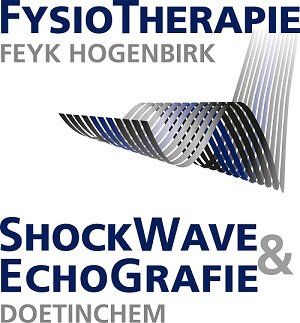Shoulder complaints based on calcifications
What is a shoulder impingement?
What are the causes?
The cause of a shoulder impingement can often be traced to two causes:
- Overuse complaints of the shoulder. This is also called a primary impingement. This usually involves working a lot above the head or repeatedly raising the arm. This can lead to minor damage in: Bursa (subdeltoidea bursitis) Cuff muscles (This is a group of four muscles that stabilize the shoulder), especially the supraspinatus muscle but also the biceps brachii muscle
Instability of the shoulder due to poor functioning of the cuff. This is also called a secondary impingement
Shoulder complaints mainly occur when raising the arm and when turning the arm inward. The cause lies in the fact that the structures between the roof of the shoulder (formed by two projections of the scapula (acromion and coracoid) and the ligament between the two projections (the coraco acromial ligament) and the head of the arm are reduced. We call this space the sub(=under)acromial space.
Tightening of the muscles, inflammation of these muscles or bursitis causes swelling in this space. Raising the arm is then the straw that breaks the camel's back, especially if the muscles also have to tense to lift something, for example.
Recent studies have shown that posture also plays an important role in the development of shoulder impingement. This posture is called the forward head carriage or upper cross syndrome. This involves an increased curvature of the back and the protrusion of the head in relation to the torso.
What is the progression?
Complaints usually arise slowly. There is usually pain at the beginning on the side of the arm, when raising the elbow above the shoulder or when turning the arm inward.
We will initially provide you with information on how you can reduce the complaint. This can possibly be supported with the help of anti-inflammatories. [Ibuprofen, Diclofenac: PLEASE NOTE: not simultaneously with blood thinners!!
If the complaints persist despite physiotherapy treatment, we will consider additional research. In many cases this will consist of ultrasound examination or taking an X-ray. If there are indications, a referral will follow to an orthopedic surgeon.
Following examination, the orthopedic surgeon will decide on further treatment. This treatment may include:
- Physiotherapy Injections, where affected structures are directly injected with an anti-inflammatory agent. Surgical intervention, usually according to the Neer method, or Barbotage. (sucking away the calcium plug, if possible)
What does the physiotherapist do?
The diagnosis of an impingement can be determined by Physiotherapy Doetinchem by means of ultrasound examination.
The treatment of a shoulder impingement uses a combination of one of the following components:
ESWT Shockwavetherapie
With impingement complaints we often see a calcification in the supraspinatus tendon. This can be remedied with ESWT Shockwave Therapy.
Exercise therapy
The exercise therapy focuses on improving the mobility of the shoulder and improving the function of the muscles around the shoulder joint and the shoulder blade. It has been shown that exercise therapy under the supervision of a physiotherapist is as effective as surgical intervention for primary impingement. Exercise therapy according to Bang and Deyle or according to McClure are the most well-known treatment methods for shoulder impingement.
Manual Therapy/Mobilizations:
However, the freedom of movement of the shoulder and the functioning of the arm do not only depend on the shoulder weight and shoulder blade. The mobility and stability of the entire kinetic chain – neck, back, ribs, collarbone and sternum is important. Attention to the function of the entire kinetic chain with manual therapy in combination with exercise therapy has therefore proven to be more effective than exercise therapy alone in patients with shoulder impingement syndrome.
Posture and movement instruction:
Throughout our lives we all develop our own posture and movement patterns. These are not always efficient and can even cause complaints. By removing the stressful factors from such a pattern, stressful postures and movements can be minimized. The layout of the workplace is also very important. If one adopts the wrong attitude during the performance of the profession, this can have far-reaching consequences. For example, leaving the computer screen in the wrong place can cause serious neck and shoulder complaints.
What can you do yourself to reduce the complaints?
- Try to move the arm as much as possible without provoking the pain. This usually means that you should not move the elbow above the shoulder and that you should be careful with twisting movements of the arm. Perform the exercise program as given to you daily. If the complaints are very annoying, you can try the entire exercise program. treat with ice. Place the ice pack in a damp tea towel on the shoulder and leave it for 20 minutes. Repeat this procedure an hour later.
ADDRESS
Physiotherapy Feyk Hogenbirk
Gezellenlaan 21
7005 AX Doetinchem
(Free parking)
T 0314 394 222
M 0653669587
info@fysiotherapiedoetinchem.com
OPENING HOURS
- Monday
- -
- Tuesday
- -
- Wednesday
- -
- Thursday
- -
- Friday
- -
- Saturday
- Appointment only
- Sunday
- Appointment only
All rights reserved | Disclaimer | Privacy | Website by Internet agency Doetinchem FrankBrinks.nl




